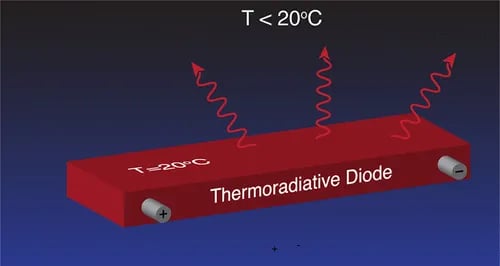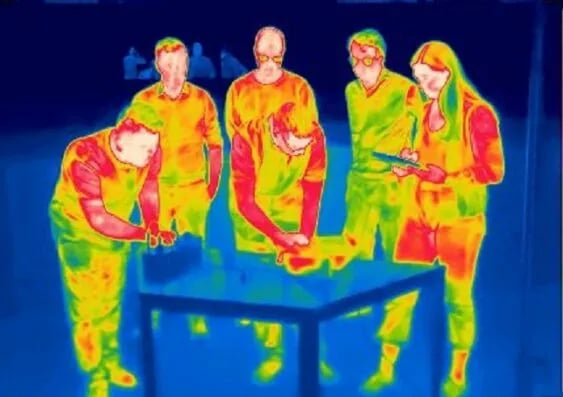A NEW BREAKTHROUGH - INNOVATIVE TECHNOLOGY HARVESTING NIGHT-TIME ENERGY FROM INFRARED RADIATION
Advanced technology developed by the University of New South Wales generates electricity from infrared radiation, even after the Sun has set. This thermoradiative diode offers a revolutionary renewable energy solution, unlocking the potential for continuous, sustainable, and eco-friendly power generation. Could this be the next leap forward for the renewable energy sector, enabling 24/7 clean energy supply?
TECHNOLOGY
VIETNGA ENERGY
11/12/20242 min read


NEW TECHNOLOGY HARVESTING NIGHT-TIME ENERGY FROM INFRARED RADIATION
In the field of renewable energy, a groundbreaking technology has been successfully developed by the University of New South Wales (Australia). With the potential to generate energy from infrared radiation at night, this innovation promises a major leap forward in enabling 24/7 electricity production, even without sunlight.
Energy Harvesting from Infrared Radiation:
By utilizing a thermoradiative diode—a specialized semiconductor component—this device can capture infrared radiation emitted by the Earth at night and convert it into electricity. This principle is based on the temperature difference between the Earth's surface and the cold surrounding space. The technology operates similarly to how solar panels absorb sunlight to generate electricity during the day.




Thermoradiative diode: harvesting solar energy "at night"
(Image: Reproduction/UNSW)
Human Body Energy Captured by Thermal Cameras
(Image: Reproduction/UNSW)
Thermoradiative Diode – "The Night-Time Energy Source":
With the development of the thermoradiative diode, infrared radiation becomes a potential source of electricity. The materials used to create this diode share characteristics with night-vision technology, enabling it to operate stably and efficiently even in low-light conditions. This technology offers a viable solution for areas with insufficient lighting and represents a crucial advancement for devices that cannot access continuous power sources.
Potential Applications:
Although the current efficiency of this technology is lower than that of traditional solar panel systems, the research team at UNSW believes that with further improvements, thermoradiative diodes could be widely applied. On a large scale, they could provide stable energy for satellites, spacecraft, or even harness heat from the human body. In the near future, this technology could support satellites in low Earth orbit—devices that must operate in prolonged darkness—helping save and maintain energy throughout their missions.
This technology opens a new chapter for the renewable energy sector. If successful, utilizing energy from thermal radiation could become a sustainable solution, providing continuous energy regardless of the time of day. This presents a significant opportunity for the energy industry, including Vietnam, to access and apply this technology early to optimize energy efficiency and protect the environment.
"In the future, this incredible technology could harvest energy from our bodies, eliminating the need for batteries in certain electronic devices. Our advancements show that it is currently possible to produce about one-tenth of the electricity required to power a mobile phone," said Ned Ekins-Daukes.
- According to Interesting Engineering
VIETNGA ENERGY
Savings - Efficiency - Sustainability
Xem thêm các tin tức liên quan khác
HEAD OFFICE
Address | No. 3, Street 10, Quarter 4, An Khanh Ward, Thu Duc City, Ho Chi Minh City, Vietnam.
Phone | (+84) 286 2872 067
Email | info@nangluongvietnga.com
REPRESENTATIVE OFFICE
Address | Floor 5, IC Building, No. 82 Duy Tan Street, Dich Vong Hau Ward, Cau Giay District, Hanoi, Vietnam.
VIET NGA SUSTAINABLE ENERGY CO., LTD
BUSINESS SUPPORT
Phone | (+84) 937 669 985
Email | hoangsen@nangluongvietnga.com
Phone | (+84) 964 819 199
Email | thuynv@nangluongvietnga.com
TECHNICAL SUPPORT
Phone | (+84) 902 968 481
Email | chinhnv@nangluongvietnga.com
Phone | (+84)96 481 9199
Email | thuynv@nangluongvietnga.com
------------------------------------------------------------------------
CONFIDENTIAL & PROPRIETARY
Copyright by VIETNGA ENERGY | 2024 All Rights Reserved Design by Cre-tive Network


